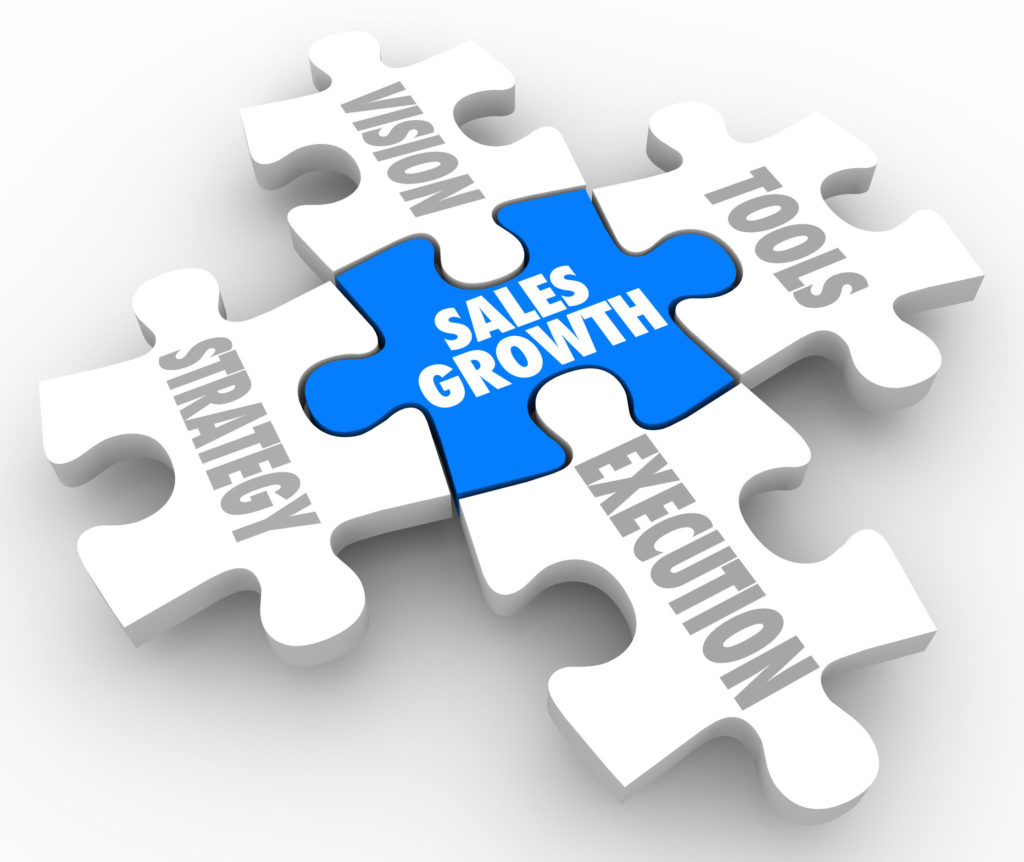“What kind of growth rate should my company shoot for this year? It’s been up and down over the past few years. How can I get more control?”
There are things the business owner can do to hit an optimum range year in and year out. It takes planning and discipline. It means letting go of the adrenaline rush that feeds most entrepreneurs. The reward is a long haul business that grows more profitably each year.
Picking the right growth rate is very important. Most entrepreneurs ride up and down waves of business growth. Not only can that cause a lot of stress, it’s also not the most profitable way to grow a business.
Optimum growth rate for most businesses is around 15 percent year over year, or more broadly, within a range of 12 percent – 20 percent growth per year. This means the business doubles in size in four- to five-year cycles. Most businesses can grow faster than this rate, especially when looking at growth one year at a time. However, they give up profits to achieve faster growth rates and they usually jeopardize futures years’ growth plans.
RISKY BUSINESS
When businesses attempt to grow faster than 15 percent to 20 percent year after year, they risk three things: errors related to digesting growth, inability to sufficiently fuel the pipeline going forward and lack of resources to keep up with the growth. These issues all contribute to waste rate, whereby the profits of the business get used up fixing problems. Let’s take a moment and look at the consequences.
A fast growth pace typically turns into greater errors – as measured by volume, frequency and severity. “Do it right the first time”, turns into, “Make time to do it over”. Resources get stretched, mistakes get made and have to be corrected. The business uses up profits to fix problems or buy solutions.
When a business’ revenue jumps up significantly over a couple years, it may have difficulty keeping up the effort in subsequent years. There’s not enough volume in the marketing pipeline to keep up the pace. Or, the sales force can’t ramp up fast enough to handle the increasing demands of yea-over-year increases.
As a business grows, it’s a given that cash flow dries up. Money goes into hiring more people and buying materials in order to deliver higher quantities of products or services. Accounts receivables, or dollars owed by customers, increase in absolute dollars even if the percentage of percentage remains steady. The business lives off of revenue from the previously lower volume of billing activity, as it waits to bill and collect at the higher levels. Credit lines are tapped to cover higher costs to rush in materials and rapidly hire staff, resulting in additional interest costs. The business may have to slow down delivery to wait for cash flow and production capacity to catch up with orders, resulting in frustrated customers who demand concessions going forward. Shortages in cash flow turn into reduced production, higher production costs, backlogs that frustrate customers, and lower profit.
A MATTER OF DISCIPLINE
The typical end result of big growth in one or more years, is that revenue falls off sharply in following years. One or more of the effects discussed above gets in the way of sustaining a high growth rate year in and year out. The business falls into the roller coaster trap – some years up, some years down. As a result, profits flat line at or near zero, getting used up to fuel extraordinary growth in some years, to fix gaps or cover losses in others.
Hitting a steady growth track is a matter of discipline. Learn to your pick shots. Focus on good customers and turn away problems. Build a pipeline that can deliver up to twice your annual goals, and then focus on accepting only the most profitable work. Set goals for the year, and stay within those goals. Put part of the increased profit back into the business, to support growth and development two to five years down the road.
When a business owner learns to stay within the bounds of 12 percent to 15 percent year over year growth, the rewards can be significant. The business digests the growth, manages cash flow, keeps problems to a minimum and continually fills the pipeline. Profit rises as the ups and downs turn into a revenue curve that moves steadily and smoothly upwards.
Trying to figure out your optimum growth rate? Give us a call; we have a neat little model to help you.
Looking for a good book? Try, The Road to Success; How to Manage Growth by Mandy Kwestel, Michael Preston, Gary Plaster.



